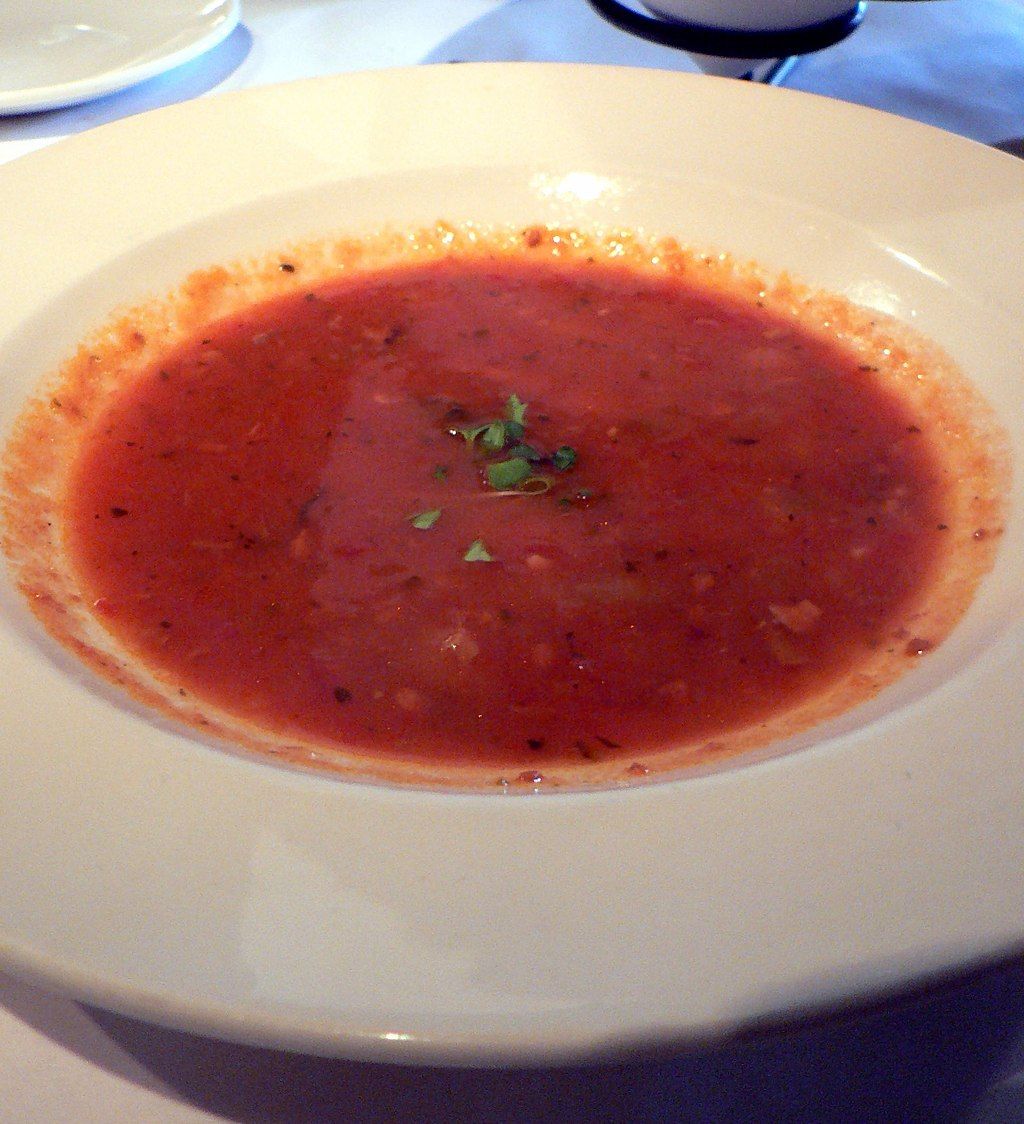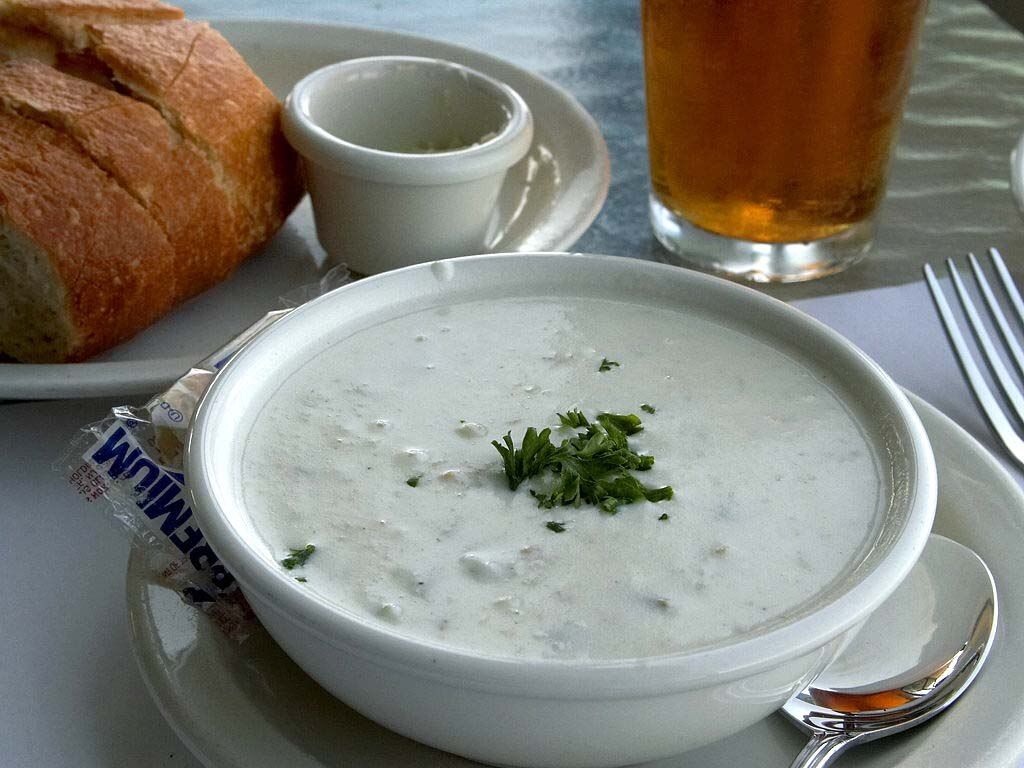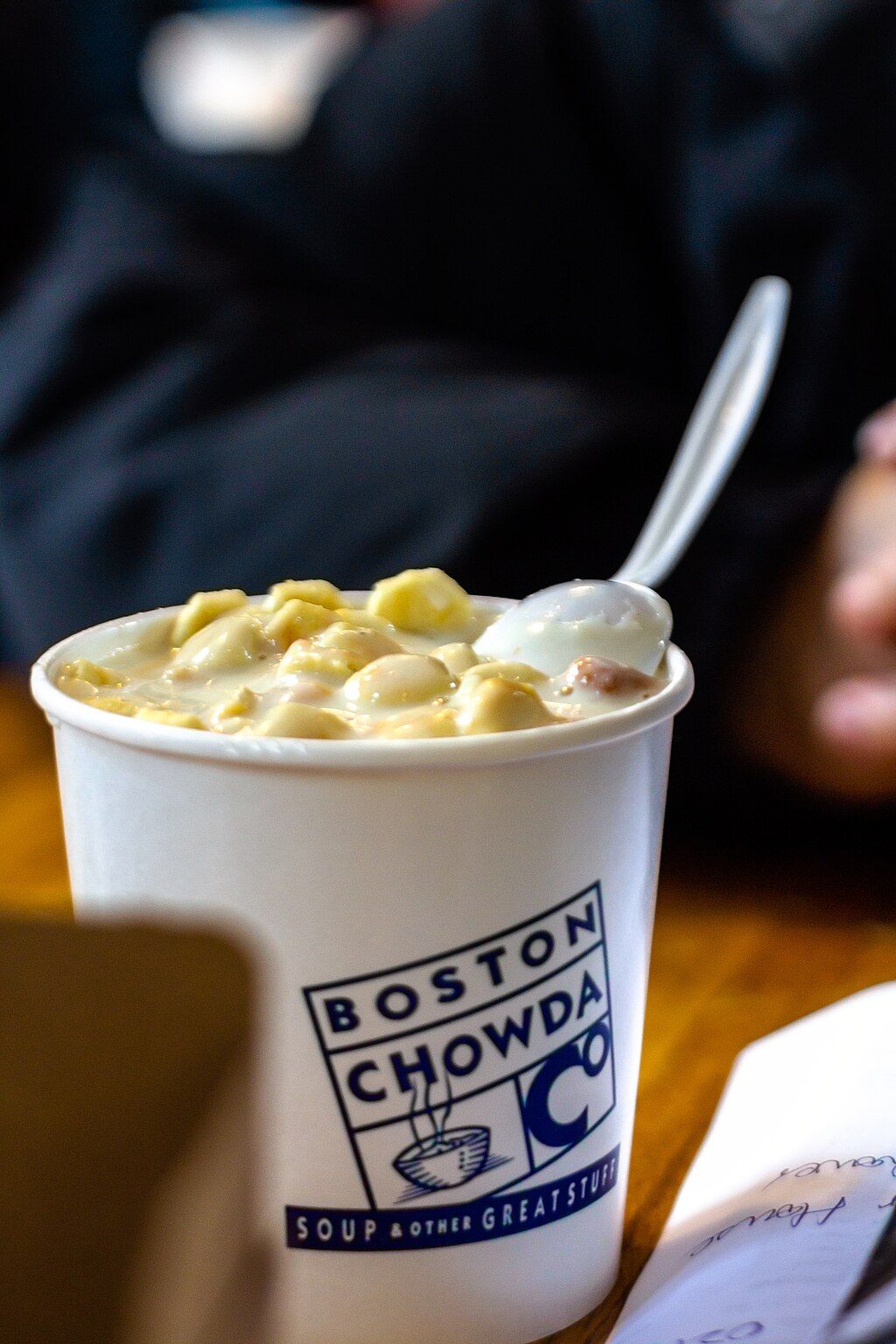Read update
- Who Doesn't Love New England AND Manhattan Clam Chowder?
Summary
- New England clam chowder is the superior chowder due to its velvety texture, chunks of potatoes, and seafood seasoning.
- Manhattan clam chowder offers a lighter and healthier alternative with its tomato base and inclusion of more vegetables.
- The use of tomatoes in Manhattan clam chowder originates from Italian cuisine, while New England clam chowder has deep roots in New England and colonial times.
The U.S. features many cities that offer the best seafood, such as clam chowder, which has different versions. The debate between New England versus Manhattan clam chowder has brought up many a temper regarding which is better. The creamy, milky chowder that's so commonly made throughout the New England region often comes to blows with the tomato-based, gazpacho-like chowder that some argue isn't even a 'chowder.' Despite that, it hasn't stopped many people from gravitating to the slightly unusual soup version, with many claiming to love it over its creamier alternative. Contrary to popular belief, creamy soups don't rank among the most popular - which has left room for Manhattan clam chowder to appeal to the thin soup lovers of the world.
The answer as to which one is the superior chowder might be obvious to some, but to others, the choice is a more difficult decision. Is it the velvety texture, chunks of potatoes, and seafood seasoning that make New England the clear winner? Or is it the slightly acidic, savory, and occasionally peppery bite of Manhattan's that makes it deliciously acceptable over the other? It's time to find out.
UPDATE: 2023/11/08 21:09 EST BY LUANA FERREIRA
Who Doesn't Love New England AND Manhattan Clam Chowder?
The dispute between New England and Manhattan clam chowder is still very much alive. Both versions are linked to immigration history in America, and this list has been updated to explain the details behind each. Additionally, it also brings places where to try each version.
Manhattan Clam Chowder
The most obvious thing about this chowder that you don't need to eat to realize is that it starts with a base of tomatoes. The broth is not nearly as thick and rich as that of a New England clam chowder, which appeals more to some people, especially those seeking a healthier, lighter version of the dish. It's common for Manhattan clam chowder to include more vegetables than its rival, with onions, carrots, and celery in addition to the similar potatoes in each version.
Tomatoes and freshly cracked black pepper go hand in hand, so it's common to see a few pinches of spicy cracked peppercorns pop over the top of a bowl of this chowder.
The Origin
Interestingly, there's no exact origin story for this chowder, but many sources say it could be traced back to the early 19th century. It's thought to have been created in Rhode Island by an Italian immigrant and Portuguese fishing community, where it likely made its way to New York during a routine delivery. Garlic and herbs are sometimes added to the soup along with a handful of oyster crackers, which is another similarity between the two... but the similarities end there.
The use of tomatoes in the chowder is thought to be influenced by Italian cuisine (although it can be found in Italy), where tomatoes play a central role and are combined with clams and vegetables. However, the name Manhattan clam chowder became popular during the 1930s.
During the 1930s, not everyone thought tomatoes should be added to the dish. The issue became so serious in Maine that there was a fine for places that added tomatoes to the Clam Chowder.
Where To Eat
Despite its popularity, finding the perfect Manhattan Clam Chowder is challenging. However, some places serve outstanding versions of the dish.
- Commander Cody's Seafood: Some clients affirm they have eaten the best Manhattan Clam Chowder of their lives at Commander Cody's Seafood. It's an excellent dish to start a dinner.
- Manhattan Clam Chowder: The Clam Chowder is highly recommended by former clients. They add some bacon and celery to the recipe, adding texture and making it tastier.

Skip The Crowds, This Is Where The Locals Eat In New Orleans
New Orleans is home to thousands of restaurants offering anything from authentic Creole cuisine to French delicacies, but here's what the locals say.New England Clam Chowder
There's not much better on a cold, rainy New England day than a bowl of hot New England clam chowder. It's the perfect dish to try when going on a scenic road trip in the region. This chowder is also called Boston clam chowder, although it's more popular throughout New England than its counterpart (except Rhode Island). It's characterized by the use of heavy cream or milk, or a combination of the two, which also gives it its classic, creamy consistency. While it might seem like New England clam chowder is a more complex recipe, the ingredients used are quite simple, allowing the clams to shine through without competing against other ingredients.
Traditionally, bacon, potatoes, celery, and onions are the only ingredients added to this soup, allowing the rich, decadent cream to do a decent amount of the talking. With origins that can be traced back to the early 1800s, it's argued that this chowder is much more rooted in chowder history than the other. Unlike Manhattan clam chowder, this chowder is often left alone with no additional toppings added other than oyster crackers, which are as much a staple topping to chowder as ketchup is to french fries.
In terms of its flavor, the creamy base lends itself well to playing up the flavors of clams, which are slightly sweet and salty, and bacon, which cuts through everything to bring a necessary meatiness and hint of smoke.
New Orleans also has plenty of great food: here are local favorites.
Origins
New England Clam Chowder has deep roots in the northeastern United States, particularly in the coastal regions of New England. Its origins can be traced back to early American colonial times, with influences from both English and French culinary traditions. The dish was initially a simple, frugal stew made by fishermen using readily available ingredients like clams, salt pork, onions, and potatoes.
Over time, New England Clam Chowder evolved, and by the 19th century, it became a popular and cherished dish in the region. Adding dairy, such as cream or milk, became a defining feature, creating the creamy consistency that characterizes this style of clam chowder today.
Where To Eat
New England Clam Chowder is a favorite dish among locals and can be found in many restaurants.
- Boston Chowda Co: Chowders are so popular in New England that a popular chain branch specializes in making them. There are also options to choose sandwiches.
- Atlantic Fish Co.: Some believe this restaurant serves Boston's best New England Clam Chowder with a bread bowl. The place is popular among locals and tourists, who agree that it is a dish everyone should try at least once when visiting the restaurant.
Which One Is The Real Winner?
While it's true that there can only be one winner when it comes to the best chowder, the answer, at this point, is far clearer than the broth that serves as its base: New England clam chowder. While Manhattan clam chowder is a nice reprieve to the heavy, creamy chowder of Boston, it's a soup that's akin to gazpacho or borscht, an option that's great during the spring and summer months when it's simply too hot out to take a spoonful of a hearty chowder. The play that bacon makes with tender clams is another reason that New England clam chowder will always have the upper edge, and the texture from perfectly cooked potatoes only helps to soothe a tired soul on a chilly day.
Pure magic happens when salty oyster crackers sink into the lush broth of a New England clam chowder that Manhattan just doesn't offer, and this creamy delight always wins the day.




